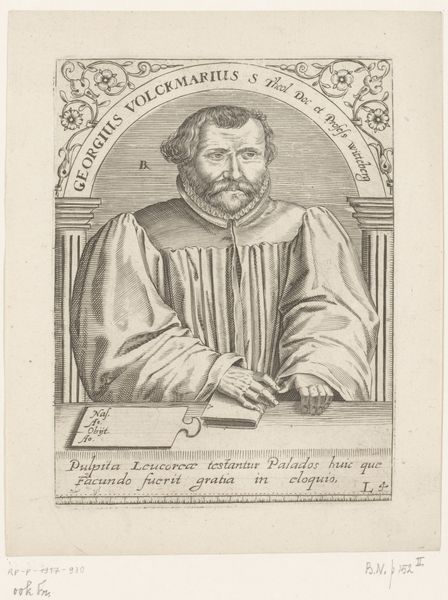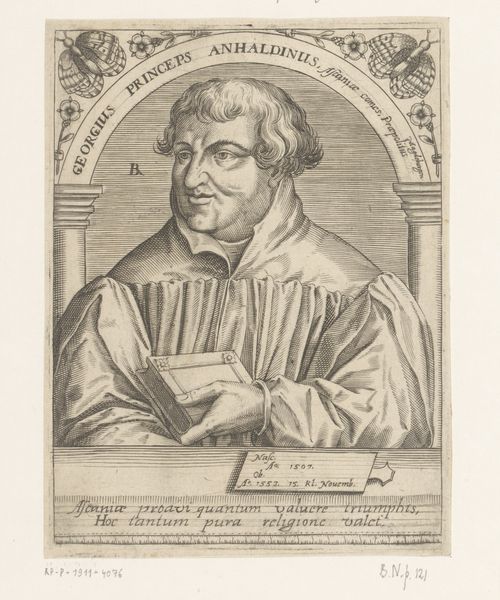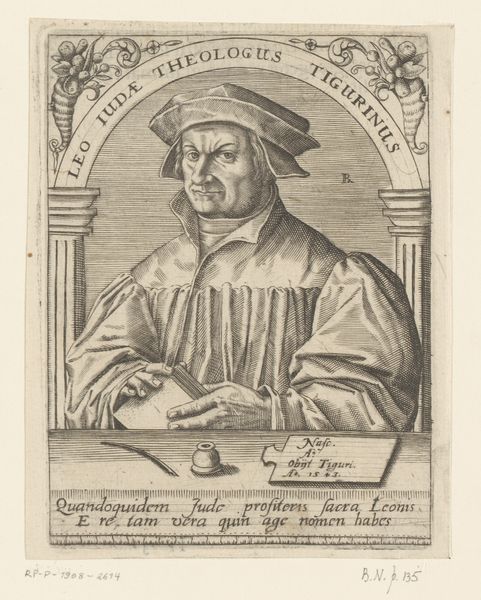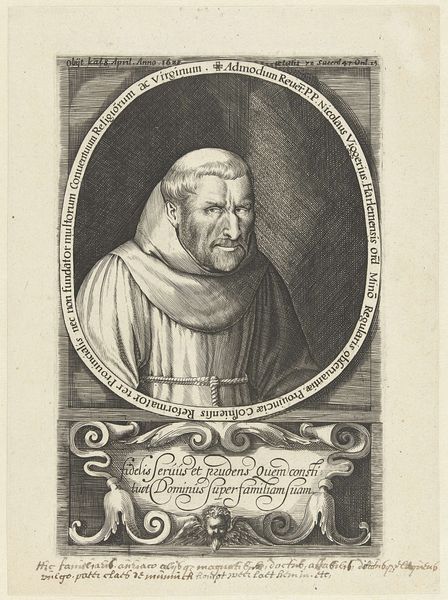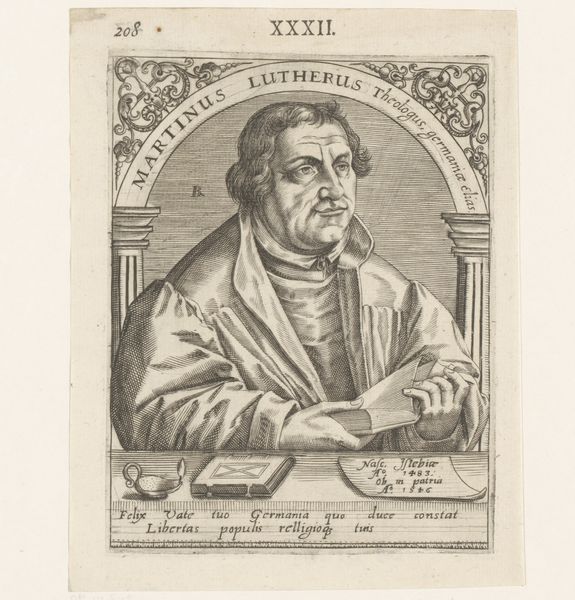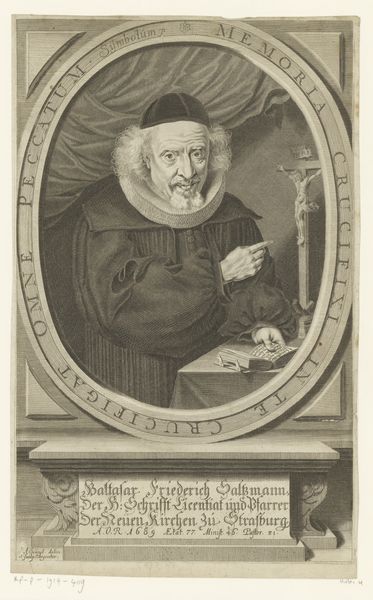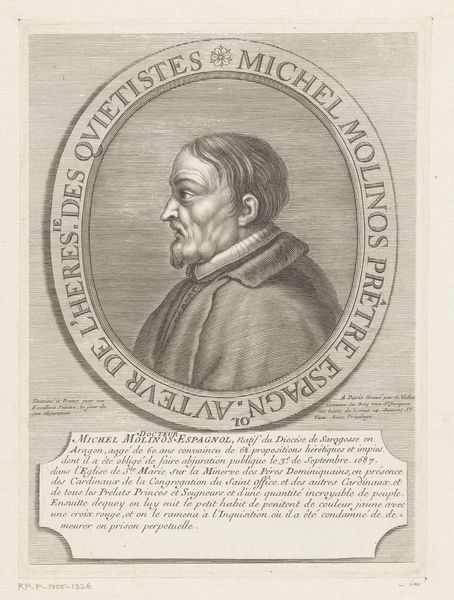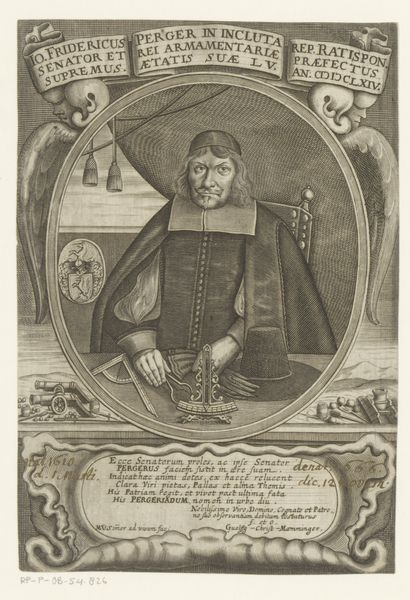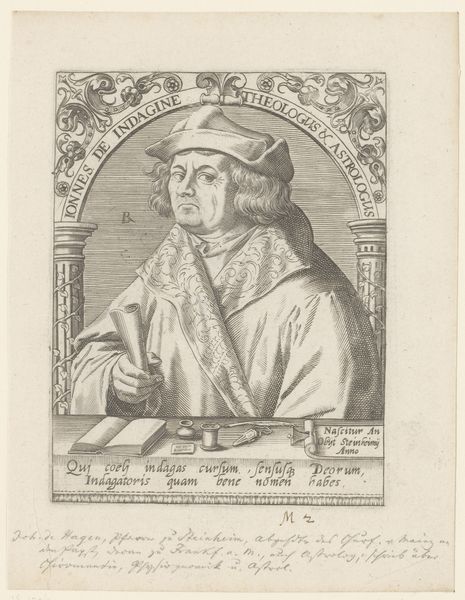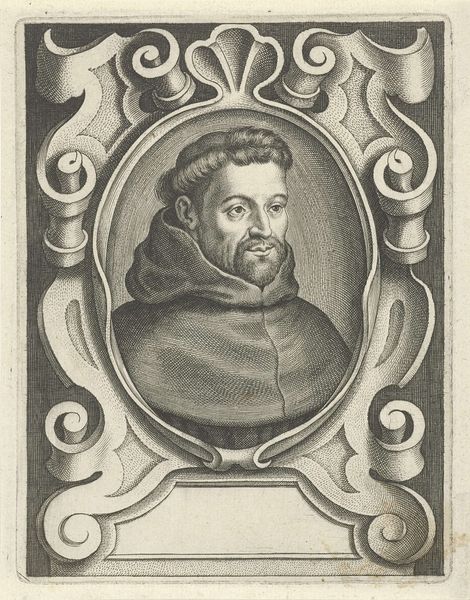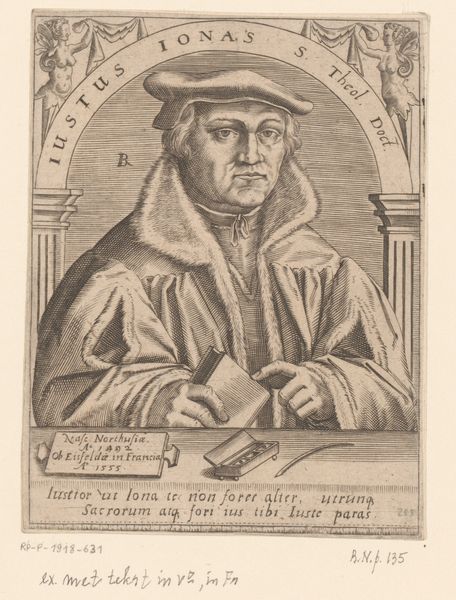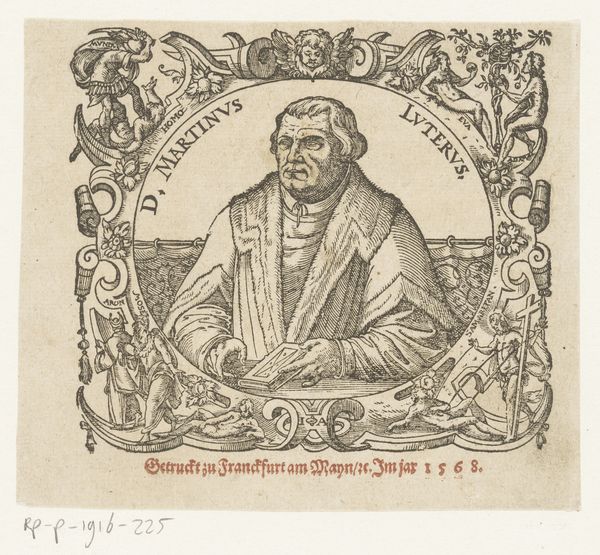
print, engraving
#
portrait
# print
#
book
#
caricature
#
11_renaissance
#
line
#
portrait drawing
#
history-painting
#
northern-renaissance
#
engraving
Dimensions: height 145 mm, width 110 mm
Copyright: Rijks Museum: Open Domain
Editor: Here we have Robert Boissard’s "Portret van Paul Eber," made between 1597 and 1599. It’s a print, currently at the Rijksmuseum. The man's face seems etched with wisdom, or maybe worry. How do you interpret this work? Curator: This engraving offers a glimpse into the public image carefully constructed during the Reformation. Consider Eber's attire; it marks him as a figure of religious authority. Think about how printmaking facilitated the spread of such imagery. Where do you think these prints were displayed or distributed? Editor: Perhaps in churches or educational settings? To further cement his importance, given the inscription? Curator: Precisely! The inscription reinforces his identity as a man of "Ingenio Virtute Fide" – Genius, Virtue, Faith. Note the presence of the book, a direct reference to learning, to theology. And observe how print as a medium allows for dissemination across various social classes. This piece thus operates as both a historical document and a piece of carefully constructed propaganda. Do you agree? Editor: Absolutely. Seeing it as propaganda shifts my understanding of the portrait. Curator: Think of how it's designed to influence and solidify Eber’s role in the religious and intellectual landscape of the time. The context reveals so much. Editor: It's amazing how a simple portrait can reveal such complex social dynamics once you start digging into the history. Curator: Indeed, it’s not just an image of a man, it's an image of power, knowledge, and religious identity being actively shaped.
Comments
No comments
Be the first to comment and join the conversation on the ultimate creative platform.
